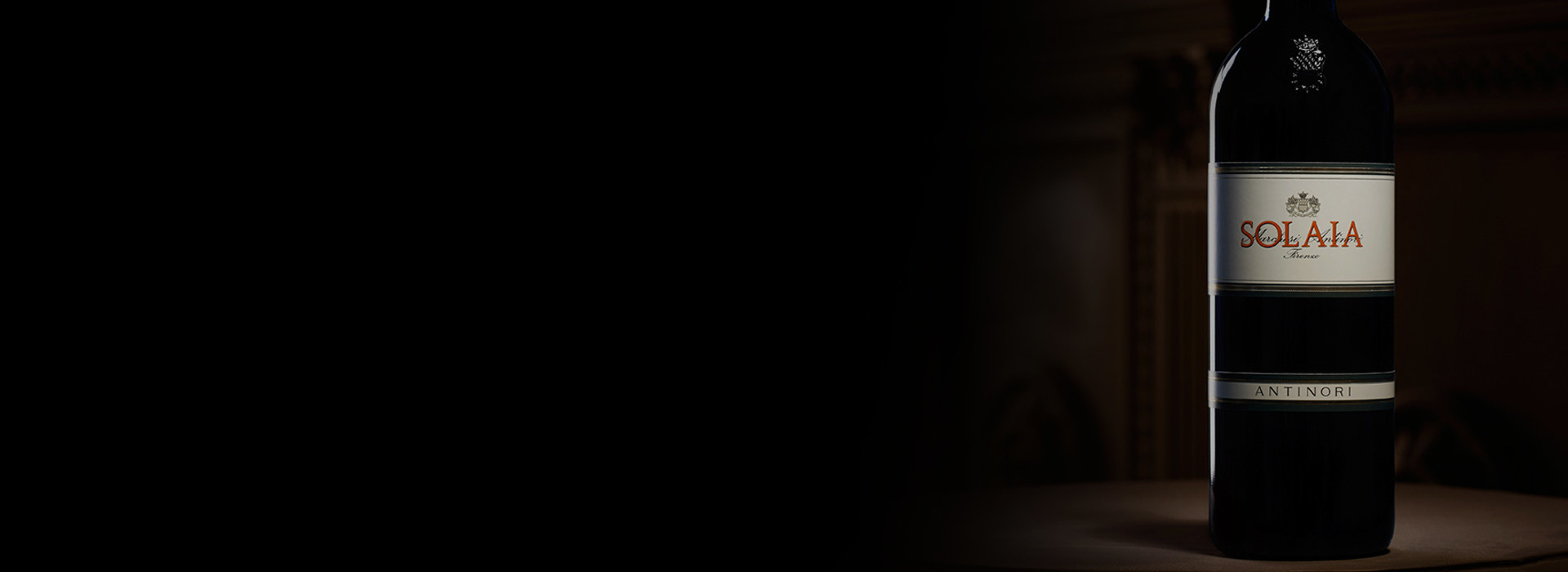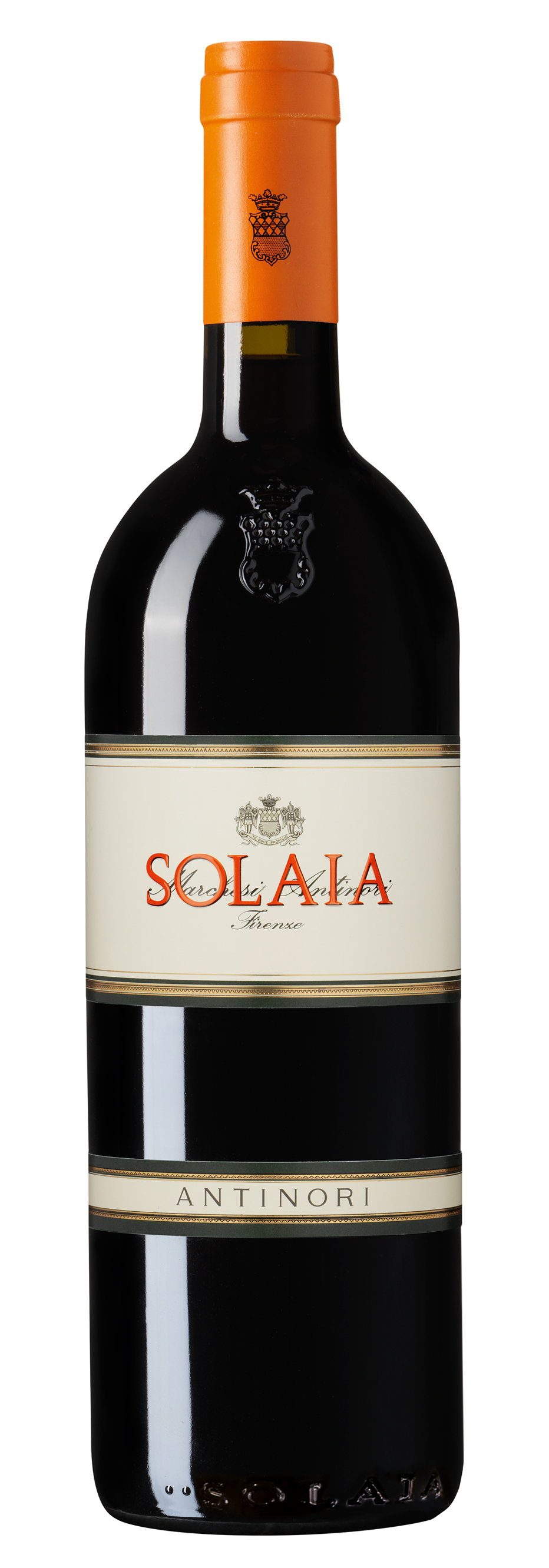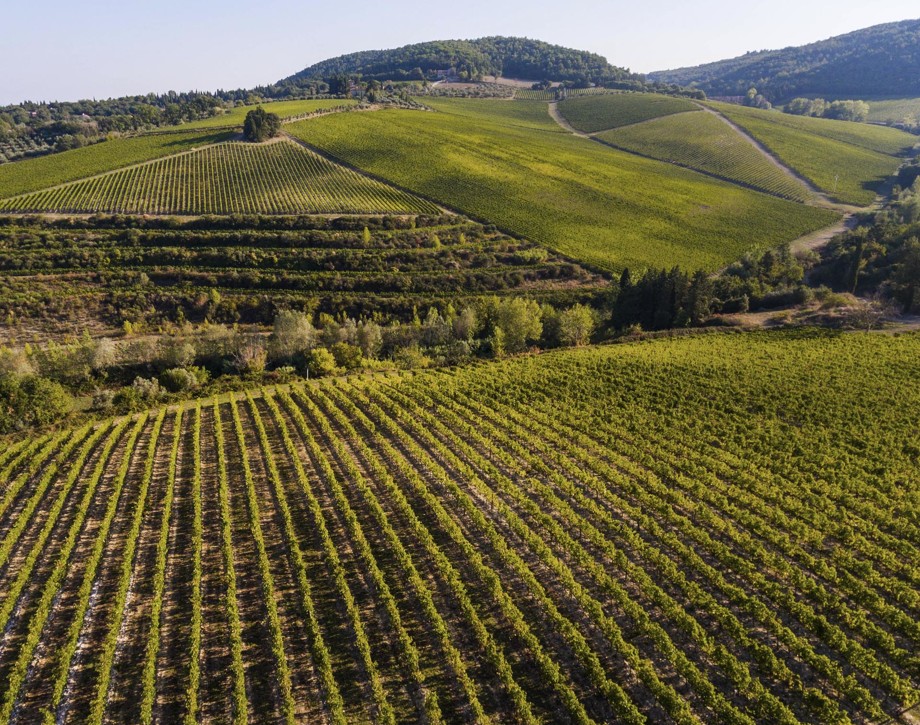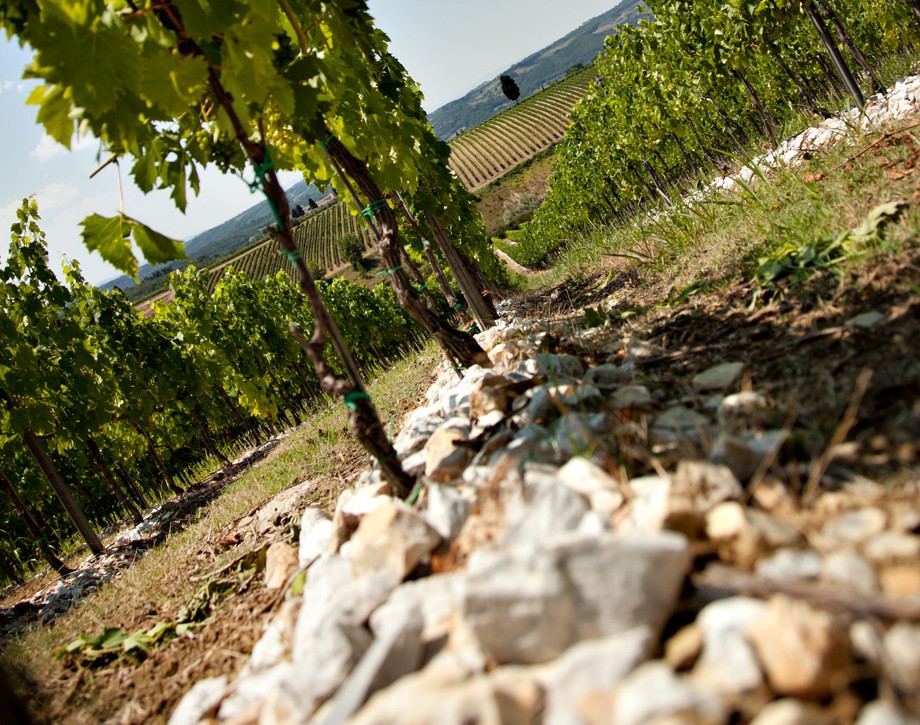Solaia

Climate
Ample rainfall, cold temperatures, and periodic snowfall characterized the winter of 2010 in Chianti Classico and led to a sustained period of repose in the vineyard and a delayed bud break. Regular rainfall continued during the spring as well and, along with lower than average temperatures, continued to delay vine growth and development. True summer weather only began in July, and the high temperatures and a completely dry climate assisted in recovering the ripening time previously lost. Cooler weather in late July and August, then once again slowed ripening and color change in the grapes and made it necessary to limit production per vine and assure that grape bunches be healthy possible.
Vinification
Picking began in late September under generally warm and sunny conditions; occasional rain was followed by strong north winds which dried the grapes, and the alternation of cool nights and warm days was of further assistance to the quality of the crop. The harvest began with Cabernet Franc in late September, continued with Sangiovese in early October, and concluded with the Cabernet Sauvignon in mid-month. The healthy bunches, the richness of color and aroma, and excellent varietal character were all signs of high level grapes, thanks of a very long growing season. On their arrival in the cellars, the grapes were first destemmed and then, before pressing, selected on the sorting table; here attention to detail was at maximum levels and berries which were not completely ripe, an exception in this vintage, were discarded and only perfect ones wound up in the fermentation tanks. The must was slowly transformed into wine in the conical fermenting tanks, and the fermentation and maceration was carried out with the maximum attention to the freshness of the aromas, the extraction of color, and a handling of the tannins programmed for softness and elegance. All of this required great sensitivity, a full knowledge of the grapes which were being worked, and a constant and careful attention to the fermenting wine, which was only run off its skins after attentive daily tastings. Once the skins were separated from the juice the wine was moved towards the malolactic fermentation, which took place in small oak barrels to give greater finesse and future drinking pleasure. The aging process then began and lasted eighteen months in French oak; during this period the various lots, fermented and aged separately according to the grape variety and the other variables (vineyard plot, ripeness, character), completed their aging and were assembled a few months before bottling.
Historical Data
Solaia is a 50 acre (20 hectare) vineyard with a southwestern exposure located at an altitude between 1150 and 1325 feet (350-400 meters) above sea level and with a stony soil of “alberese” (hard limestone) and “galestro” (flaky calcareous clay) rock. The vineyard is located at the Tignanello estate. The Antinori family produced this wine for the first time in the year 1978, and the initial blend was 80% Cabernet Sauvignon, and 20% Cabernet Franc, a formula repeated in 1979 as well. In the following years, 20% of Sangiovese was introduced and certain adjustments were also made in the rapport between Cabernet Sauvignon and Cabernet Franc until the current blend was settled upon. Solaia is produced only in exceptional vintage, and was not produced in 1980, 1981, 1983, 1984, and 1992.
Tasting Notes
A deep ruby red in color, the wine was also endowed with expressive varietal aromas and sweet notes of red berry fruit and spices. The long, cool growing season was perceptible in the full ripeness of flavor, the ample and supple structure, and the elegance and admirable balance. The sustained finish and aftertaste echoed the fragrance first felt on the nose.
Awards
Wine Advocate 97/100 USA James Suckling 98/100 USA Guida Bibenda 2014 5 Grappoli Italy Guida Oro I Vini di Veronelli 2014 Super Tre Stelle Italy Wine Spectator 93/100 USA Wine Enthusiast 97/100 USA Antonio Galloni 98 /100 USA Falstaff 95/100 Austria Int Wine Cellar 93/100 USA

The Wine
The sunniest part of the Tignanello's hillside is home to the Solaia vineyard. The very best grapes from the very best vineyard. All the rest is passion, the utmost care and research. These are the secrets of Solaia together with the finest Cabernet Sauvignon, Cabernet Franc and Sangiovese grapes from its namesake vineyard.

Climate
Ample rainfall, cold temperatures, and periodic snowfall characterized the winter of 2010 in Chianti Classico and led to a sustained period of repose in the vineyard and a delayed bud break. Regular rainfall continued during the spring as well and, along with lower than average temperatures, continued to delay vine growth and development. True summer weather only began in July, and the high temperatures and a completely dry climate assisted in recovering the ripening time previously lost. Cooler weather in late July and August, then once again slowed ripening and color change in the grapes and made it necessary to limit production per vine and assure that grape bunches be healthy possible.
Vinification
Picking began in late September under generally warm and sunny conditions; occasional rain was followed by strong north winds which dried the grapes, and the alternation of cool nights and warm days was of further assistance to the quality of the crop. The harvest began with Cabernet Franc in late September, continued with Sangiovese in early October, and concluded with the Cabernet Sauvignon in mid-month. The healthy bunches, the richness of color and aroma, and excellent varietal character were all signs of high level grapes, thanks of a very long growing season. On their arrival in the cellars, the grapes were first destemmed and then, before pressing, selected on the sorting table; here attention to detail was at maximum levels and berries which were not completely ripe, an exception in this vintage, were discarded and only perfect ones wound up in the fermentation tanks. The must was slowly transformed into wine in the conical fermenting tanks, and the fermentation and maceration was carried out with the maximum attention to the freshness of the aromas, the extraction of color, and a handling of the tannins programmed for softness and elegance. All of this required great sensitivity, a full knowledge of the grapes which were being worked, and a constant and careful attention to the fermenting wine, which was only run off its skins after attentive daily tastings. Once the skins were separated from the juice the wine was moved towards the malolactic fermentation, which took place in small oak barrels to give greater finesse and future drinking pleasure. The aging process then began and lasted eighteen months in French oak; during this period the various lots, fermented and aged separately according to the grape variety and the other variables (vineyard plot, ripeness, character), completed their aging and were assembled a few months before bottling.
Historical Data
Solaia is a 50 acre (20 hectare) vineyard with a southwestern exposure located at an altitude between 1150 and 1325 feet (350-400 meters) above sea level and with a stony soil of “alberese” (hard limestone) and “galestro” (flaky calcareous clay) rock. The vineyard is located at the Tignanello estate. The Antinori family produced this wine for the first time in the year 1978, and the initial blend was 80% Cabernet Sauvignon, and 20% Cabernet Franc, a formula repeated in 1979 as well. In the following years, 20% of Sangiovese was introduced and certain adjustments were also made in the rapport between Cabernet Sauvignon and Cabernet Franc until the current blend was settled upon. Solaia is produced only in exceptional vintage, and was not produced in 1980, 1981, 1983, 1984, and 1992.
Tasting Notes
A deep ruby red in color, the wine was also endowed with expressive varietal aromas and sweet notes of red berry fruit and spices. The long, cool growing season was perceptible in the full ripeness of flavor, the ample and supple structure, and the elegance and admirable balance. The sustained finish and aftertaste echoed the fragrance first felt on the nose.
Awards
Wine Advocate 97/100 USA James Suckling 98/100 USA Guida Bibenda 2014 5 Grappoli Italy Guida Oro I Vini di Veronelli 2014 Super Tre Stelle Italy Wine Spectator 93/100 USA Wine Enthusiast 97/100 USA Antonio Galloni 98 /100 USA Falstaff 95/100 Austria Int Wine Cellar 93/100 USA

Tenuta Tignanello
The Tenuta Tignanello estate is in the heart of Chianti Classico, in the gently rolling hillsides between the Greve and Pesa river valleys. It extends over an area of 319 hectares (788 acres), of which 130 (321 acres) are dedicated to vines. Two of the estate’s prized vineyards are on the same hillside, Tignanello and Solaia, on soils that originated from marine marlstone from the Pliocene period rich in limestone and schist. The vines enjoy hot temperatures during the day and cooler evenings throughout the growing season. The estate’s two signature wines, Solaia and Tignanello, are produced from these vineyards and have been defined by the international press as “among the most influential wines in the history of Italian viticulture”. According to Marchesi Antinori, Solaia and Tignanello are an ongoing challenge and a never-ending passion. The Tignanello estate has vineyards of indigenous Sangiovese grapes as well as some other untraditional varieties such as Cabernet Franc.

Soil
Soils originating in the Pliocene period, rich in marine fossils with veins of clay. Rich presence of calcareous rocks and marl.
















